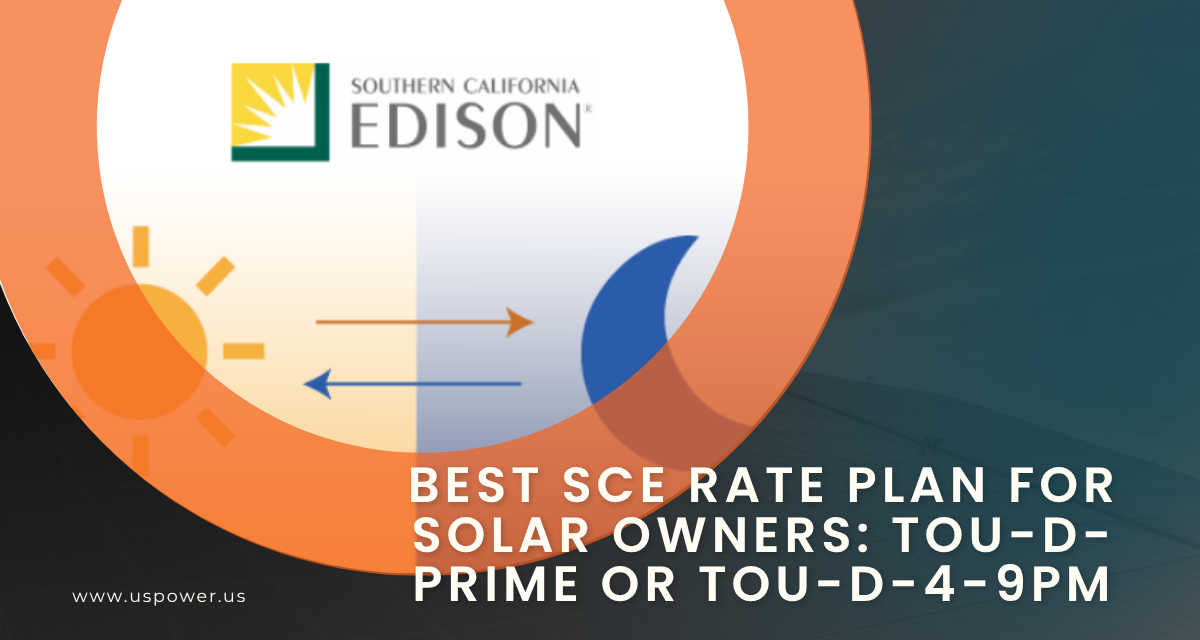Solar Installation Problems (and How to Prevent Them)

Solar and Roofing Advisor
Learn the top issues homeowners face during solar installation—like utility delays or roof risks—and how US Power ensures smooth, worry-free installs.
%20Cover.png)
If you’re considering installing solar panels with US Power in Southern California, you’re making a smart move. That said, even the best-planned solar projects can run into bumps. This article walks you through the most common issues homeowners face during solar installations—and how working with a professional, experienced installer helps you avoid them.
Permitting & Interconnection: The Hidden Delay Traps
Permitting delays
Before any panels go on your roof, your project must pass local building permits and utility interconnection applications. In California, this can be more complex than it sounds. For example:
- Under the Electric Rule 21 tariff, utilities like Southern California Edison (SCE) or Pacific Gas & Electric Company (PG&E) must review solar interconnection requests—but many projects face extended review times.
- A recent advocacy complaint found that PG&E and SCE missed many of their deadlines—routinely exceeding timeframes in connection steps, which delays homeowners from getting their system turned on.
- Local jurisdictions can change code cycles or interpretation mid-process. That means you might sign a contract under one code—but by the time you file the permit, the jurisdiction may have adopted a newer code, forcing redesigns or setbacks. This risk is real in Southern California.
Interconnection surprises
Even after permitting is submitted, your utility may come back with unexpected requirements:
- If your system triggers a more involved review (a Level 2 or Level 3 interconnection review), you could face an extra several weeks to months of delay. The “levels” refer to review intensity based on system size and grid impact.
- The utility may require upgrades to the circuit or additional equipment (e.g., telemetry, remote monitoring, or protective devices) before the system can go online. Working with a full-service installer helps you anticipate these.
- For California homeowners, this means you should budget for potential time extensions and unforeseen utility costs—not just the hardware and installation.
What you can do
- Ask your installer (US Power) for a full permit & interconnection timeline upfront—including contingencies.
- Verify that your city/county uses automated streamlined permitting (e.g., via SolarAPP+) or at least has a track record of timely approvals. California law (Solar Access Act, SB 379) requires many jurisdictions to adopt such tools.
- Ensure the proposal includes any utility upgrade scenarios, and that you have a buffer for delays.
Utility Company Surprises: More Than Just Roof and Panels
Once your permit is submitted, the utility steps in—and that’s when additional issues can surface.
- The utility may return your interconnection application with a requirement for equipment upgrades: for example, new relays, remote monitoring (SCADA), or even substation upgrades if the circuit is undersized. These requirements are safety- and grid-reliability driven.
- Because your installer can’t always predict what the utility will inspect or require, some of these surprises come after you’ve signed the contract. The key is to work with an installer like US Power that handles the coordination and can absorb those conversations on your behalf.
- In Southern California’s grid, given the high solar penetration, these sorts of utility surprises are becoming more common.
What this means for homeowners: Be prepared for potential extra costs or time if the utility identifies issues. While these may not apply in every case, good installers proactively assess the utility circuit during site evaluation to reduce risk.
Construction Issues: On-Site Risks That Can Impact Your Investment
The physical installation phase brings its own risks:
Roof, gutter, landscaping damage
- Ladders, scaffolding or equipment lifts may damage gutters or downspouts if not properly protected.
- If the installer trenches through your yard for ground-mount or battery wiring, heavy equipment can leave ruts or disturb landscaping.
- A professional installer ensures they restore the site: reseeding lawn, repairing minor roof penetrations, and cleaning up after the job.
Underground and hidden utility conflicts
- Many homes have customer-owned underground lines (perhaps forgotten) that installers may not anticipate. If these are damaged, the homeowner may face downtime or repair costs.
- Rock, concrete, or obstructions under the soil can slow trenching or require change in strategy (e.g., using helical ground screws vs posts).
- An experienced contractor will perform a thorough site survey, call “811” for utility marking, and factor contingencies for unknown underground conditions.
Equipment logistics damage
- Deliveries of inverters, optimizers, or solar panels can suffer transit damage. A good installer maintains spare inventory and inspects components on arrival to avoid delay.
- During the final connection, if the equipment is not correctly commissioned, you could end up with lower production or warranty issues.
What to ask your installer:
- Do they inspect equipment upon delivery?
- Will they document the site condition pre- and post-installation (photos of roof, landscaping)?
- Is site restoration part of the contract?
- How do they handle unexpected underground or roof structure issues?
Post-Install Issues: When “Turn On” Doesn’t Mean “Fully Operational”
Even after your system is physically installed, several things can delay or reduce the expected savings.
Dead or faulty equipment
- Occasionally an inverter shipped from the factory may be defective or fail to meet spec. A trusted installer has RMA processes and keeps spare parts ready to minimize downtime.
- Solar panels can get cracked in transit or during handling. If the damage isn’t caught early, you may face production issues or warranty complications.
Grid/utility power quality issues
- Your system’s inverter expects utility power within specified voltage/frequency ranges. If the utility supplies “dirty” power (irregular voltage/frequency), the inverter may shut down or not operate optimally.
- In some rare cases, the utility itself must intervene (e.g., install a transformer or adjust grid parameters) before your system will function fully.
- In California, given grid aging and high solar penetration, these “hidden” issues are part of what can delay final “permission to operate.”
Interconnection final approval delays
- Your system can be physically complete, but until the utility grants “permission to operate or PTO” you may not receive full net-metering or export credits. Delays here directly impact the expected savings timeline.
- In 2025, it was reported that major utilities missed deadlines in up to 73 % of reviewed cases.
What to ensure:
- The contract should include commissioning and monitoring: does the installer come back for final checkout once the utility signs off?
- Confirm how system performance will be monitored and how you’ll be alerted if production drops unexpectedly.
- Ask whether monitoring is included (and free) so you can verify the system is performing as promised.
Why These Issues Do Not Mean You Should Avoid Going Solar
Here’s the good news: the majority of residential solar installations in Southern California go smoothly—and deliver excellent value. But being informed about the risks helps you select the right partner and set realistic expectations.
- According to the Solar Energy Industries Association (SEIA) Q2 2025 report, the U.S. residential solar market installed 1,106 MWdc in Q1 of 2025—despite a year-over-year decline of 13 %.
- California jurisdictions are among the fastest in permit processing for residential solar, although delays still occur and vary by county.
- Working with a local, experienced, full-service solar installer—in your region—makes the biggest difference. It’s not just about the hardware (e.g., panels or inverters) but about project management, permitting, utility interface, and site restoration.
How US Power Avoids These Pitfalls—And Delivers Better Outcomes
At US Power, we understand that minimizing risk is just as important as maximizing energy output. Here’s how we approach it:
- Factory-direct pricing on American-made panels: Our exclusive partnership with Qcells allows us to offer high-efficiency panels with direct pricing—giving you better savings and fewer supply delays.
- In-house permitting and interconnection management: We handle the full process—from permit submission to utility interconnection—so you don’t remain in limbo. We monitor utility queue status and assist with any required upgrades.
- Site-specific risk assessment: Prior to contract signing, we inspect roof condition, landscaping, underground routing and utility panel capacity—so surprises are uncovered early.
- Full site restoration included: We take care of gutters, landscaping, roof penetrations and overall cleanup so your property is left in equal or better condition.
- Monitoring and commissioning support: Once the array is live, we provide monitoring tools and support so you can verify performance—and we step in if issues arise.
- Transparent timeline & contingency plan: Before you commit, we provide a realistic schedule including permitting, utility approval, construction, and commissioning, with identified risks and how we handle them.
Ready to Move Forward? Talk to us!
If you’re ready to lock in your solar savings and avoid the common installation traps, here’s the recommended path:
- Schedule a free site evaluation with US Power. We’ll inspect your home in Southern California, review your electric bill, and provide a detailed system proposal with expected savings.
- Review the proposal and contract thoroughly—ask about permitting timeline, any utility upgrade scenarios, system size, expected output, contract end date, and monitoring access.
- Prepare your site and finances — make sure your roof is in good shape (if it needs repair, do it first), plan for potential utility delays, and sign with an installer that supports you end-to-end.
- Stay engaged during construction — ask for updates, inspect site restoration (roof, landscaping), and await commissioning.
- Monitor your production — once your array is live, check the monitoring portal regularly and report any extended drop in output to your installer promptly.
Going solar in Southern California is one of the smartest long-term investments a homeowner can make—especially when done right. But like any sophisticated project, it comes with potential pitfalls: permitting delays, utility surprises, construction issues and grid/commissioning complications. By partnering with US Power—local, experienced, and factory-direct with Qcells—you significantly reduce those risks and maximize your long-term benefit.
Don’t let uncertainty slow you down. Book your free consultation today and put your solar journey on the right track.
Artículos relacionados
Nuestros blogs relacionados
Learn how the 30% federal solar tax credit works, who qualifies, and what steps.
Tips before hiring pros for solar panel cleaning, is worth the time and cost?
Maximize your 2025 solar savings. Find the best SCE rate plan for your home.
Nuestros socios de marcas de energía solar y techos








Empoderamos a las comunidades y las empresas para que aprovechen las energías limpias y renovables energía solar soluciones que impulsan el crecimiento sostenible.
Derechos de autor © 2025 US POWER | Energía solar y techosUS Power - Axia by QCells. All Rights Reserved.
La privacidad es importante para nosotros, por lo que tiene la opción de deshabilitar ciertos tipos de almacenamiento que pueden no ser necesarios para el funcionamiento básico del sitio web. El bloqueo de categorías puede afectar a su experiencia en el sitio web.
Imprescindible
Estos elementos son necesarios para habilitar la funcionalidad básica del sitio web.
Personalización
Estos elementos permiten que el sitio web recuerde las elecciones que ha realizado (como el nombre de usuario, el idioma o la región en la que se encuentra) y proporcionan funciones mejoradas y más personales.
Mercadeo
Estos artículos se utilizan para ofrecer publicidad que sea más relevante para usted y sus intereses.
Analítica
Estos elementos ayudan al operador del sitio web a comprender cómo funciona su sitio web, cómo interactúan los visitantes con el sitio y si puede haber problemas técnicos.
Nosotros y nuestros socios externos utilizamos cookies y otras tecnologías para mejorar y rastrear su experiencia en este sitio, realizar análisis y personalizar el marketing para usted. Al usar el sitio, aceptas que usemos estas tecnologías, incluido el registro y el monitoreo de tus interacciones con el sitio.
¡Obtenga una estimación solar instantánea usando el satélite!










